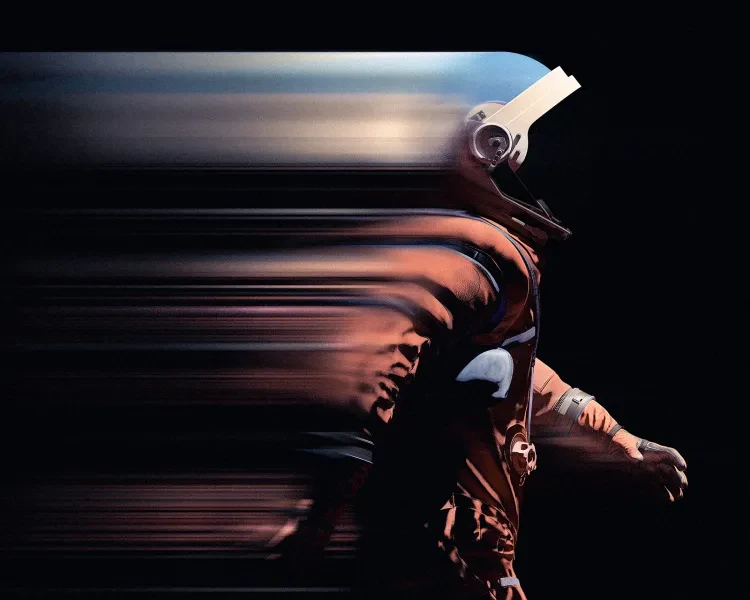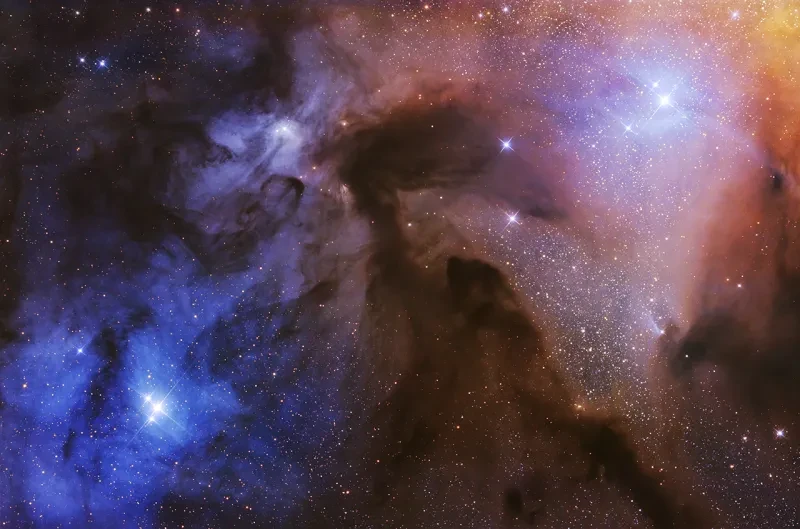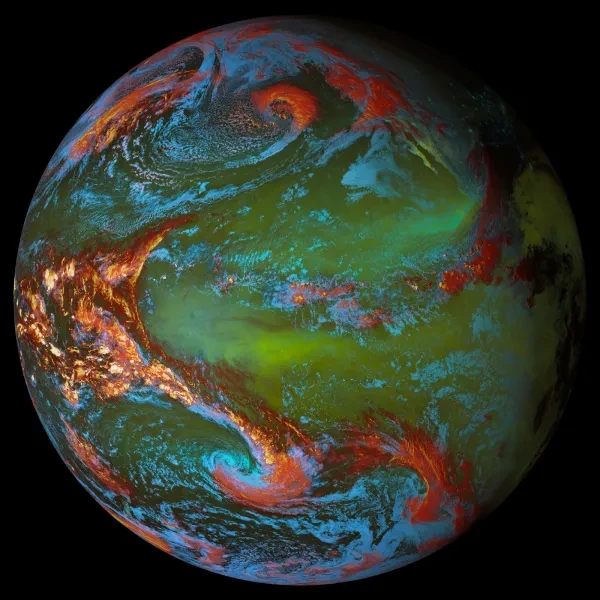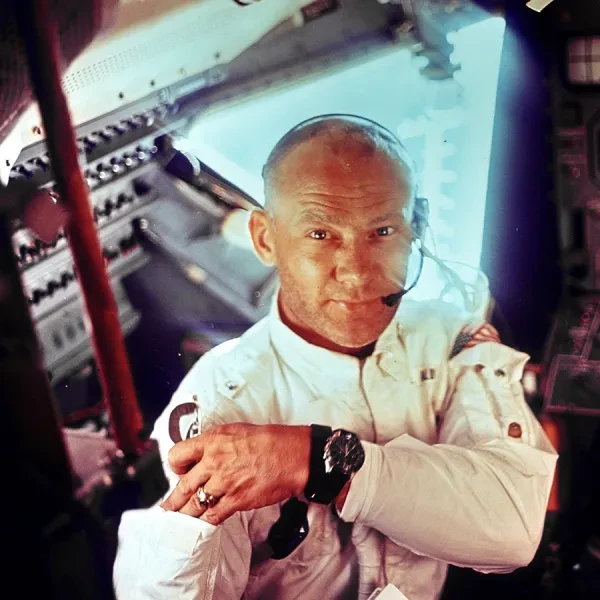
The Moon landings were faked. Apollo 11 didn't happen. Humans never set foot on the Moon. Heard all this before?
Conspiracy theories surrounding the Moon landings have proved worryingly persistent in the 50 years since Neil Armstrong and Buzz Aldrin took their first small steps on the lunar surface.
NASA's landmark achievement is still being challenged.
Despite there being a wealth of information online debunking these conspiracy theories, the cries of hoax continue. Why?
More space to explore
Sign up to our space newsletter and receive monthly astronomy guides, news and events from Royal Museums Greenwich, including expert insight from Royal Observatory astronomers.
"We find ourselves awash in an ocean of information online," National Space Centre Discovery Director Profesor Anu Ojha said during a 2019 lecture in Greenwich.
"There has been more data produced in the last two years than in the whole of human history. This information ocean is getting more turbulent every single day," he continued. "The only tools we have to navigate through this maelstrom are the critical thinking skills that we are trying to develop in people as scientists."
So how can science help to debunk Moon landing conspiracy theories?
Conspiracy theory 1: shadows in the Moon landing photos prove the images were faked
Take a look at the image below, and at the full panorama on the NASA website. Look closely at the shadows cast by astronaut Neil Armstrong and another object just out of shot. What's wrong with them?
They're not parallel.
This image has been taken as proof by conspiracy theorists that the Moon landings were faked. Surely if the Sun were the only light source, then the shadows should be parallel? Doesn't this prove that the whole scene was mocked up in a studio, with multiple light sources creating different shadow patterns?
Well, no.
"This is on the surface of the Moon, but we can reproduce this effect any time we want to on Earth," Prof Ojha explains. "You have all seen this phenomenon yourself, where, because of perspective, parallel lines appear to be non-parallel. If you are trying to reduce on to a two-dimensional plane a three-dimensional situation, you can make lines do all sorts of weird things. Artists have been using this for centuries."
Go outside when the Sun is low in the sky and see this effect for yourself. Just like the images from Apollo 11, the shadows will not be parallel.
Conspiracy status: debunked
Shadows on other worlds
Join astronomers at the Royal Observatory Greenwich as they discover what shadows look like on other worlds.
Conspiracy theory 2: Apollo astronauts could not have survived Earth's radiation field
Earth is surrounded by a zone of charged particles known as the 'Van Allen' radiation belt.
"These are regions surrounding the Earth in our magnetic field where high energy trapped particles from the Sun tend to get confined," Prof Ojha says. "What that means is if you are going into these regions, there are extremely high radiation concerns."
If that is the case, how did the Apollo astronauts travel through the Van Allen radiation belt and out of Earth's orbit unharmed? Surely the amount of radiation would have killed them? Doesn't this prove that the Moon landings were a hoax?
Prof Ojha has a killer reply.
"My answer to that is... firewalking," he says.
"If you’ve ever done firewalking, you’ll know the one thing you don’t do is linger around in the middle of the firepit. You cross as quickly as you can. From a science point of view, as long as you walk across quite quickly, looking at the thermal conductivity of your feet, you are not going to have enough thermal energy going into the soles of your feet to burn you. You’re absolutely fine. Just don’t hang around in the middle!
"In a similar way, the transit time through the Van Allen radiation belt right at the beginning of the Apollo voyages was incredibly short. Travelling through the Van Allen radiation belt if you are going fast enough – which you need to be if you’re going to the Moon – is no problem whatsoever."
Conspiracy status: debunked
Conspiracy theory 3: why are there no stars in pictures of the NASA Moon landings?
Here is another Moon landing photograph which has caught conspiracy theorists' eye.
If the image really was taken on the Moon, shouldn't the sky be filled with stars? After all, there is no atmosphere to distort the image, no clouds to interrupt that glorious view.
Conspiracy theorists argue that the lack of stars in the Apollo 11 mission photographs prove that the event was staged. NASA could not have faked the full wonder of the lunar sky, and so they simply chose not to include any stars at all.
Here's another solution: both the astronauts and the lunar landscape itself are brightly lit by the Sun. The sky may look black, but remember, this is in fact daytime on the Moon.
If you're going to take a photo of a brightly lit scene, your camera's shutter speed needs to be fast and your aperture incredibly small. In that situation, faint objects like stars simply aren't going to show up.
Conspiracy status: debunked
Conspiracy theory 4: the Apollo 11 US flag is waving in the wind... but there's no wind on the Moon
"One of the crowning moments in terms of US national pride was seeing the Stars and Stripes on the surface of the Moon," Prof Ojha says.
Buzz Aldrin saluting the proudly waving American flag on the Moon remains one of the iconic images of the Apollo 11 mission, a declaration of US supremacy over space race rivals the Soviet Union.
But if there is no atmosphere on the Moon, there is no wind - so why is the flag waving?
Look again at the image, and in particular along the top edge of the flag, and you will find the answer. A telescopic pole has been extended along the top in order to make the flag fly proudly (yes, NASA really did think of everything).
"Because it’s been set up like this, it appears to be waving in the wind," Ojha explains. "All the wrinkles are there because it’s literally been screwed up for four days en route to the Moon."
Conspiracy status: debunked
Conspiracy theory 5: if we really went to the Moon in 1969, why have we never been back?
Apollo 17, the last Apollo mission to land astronauts on the Moon, took place in 1972. Since then, humans have never returned.
Maybe that's because we never went to the Moon in the first place?
Apollo 17 wasn't meant to be the end of the story, of course. Throughout the 1970s there were ambitions to establish a permanent lunar base before turning to the next major space exploration challenge: Mars.
It never happened. But this was no grand conspiracy; this was geopolitics.
"The answer is we changed our priorities," Ojha says. "From a combination of the Vietnam War, but also there was this geopolitical element of thinking, 'We’ve won the race'. Just as we’d got good at doing science on the Moon, we abandoned it."
Instead, attention turned to the Space Shuttle programme and, latterly, the International Space Station, which has been permanently inhabited by teams of astronauts since November 2000. But that doesn't mean humans couldn't return to the Moon in the future...
Conspiracy status: debunked
Apollo 11 50 years on: leaving our mark on the Moon
The Moon landings were not a hoax. Apollo 11 did happen. Humans really did set foot on the Moon.
We have countless images, videos, lunar samples and scientific data to prove it. But more than that, human exploration has literally left its mark on the Moon's surface.
"In 2009 we sent a lunar reconnaissance orbiter to map the lunar surface in three or four orders of magnitude more resolution than had ever been managed before," Prof Ojha says. "Every single Apollo landing site was pictured. Absolutely stunning.
"What really strikes me about these images is that those footprints, those tracks of the lunar vehicles - they’re going to maintain their integrity for millions of years," he says. "No matter what we do to ourselves as a civilisation, we’ve really left our mark on the cosmos."
Find more stories you might like















